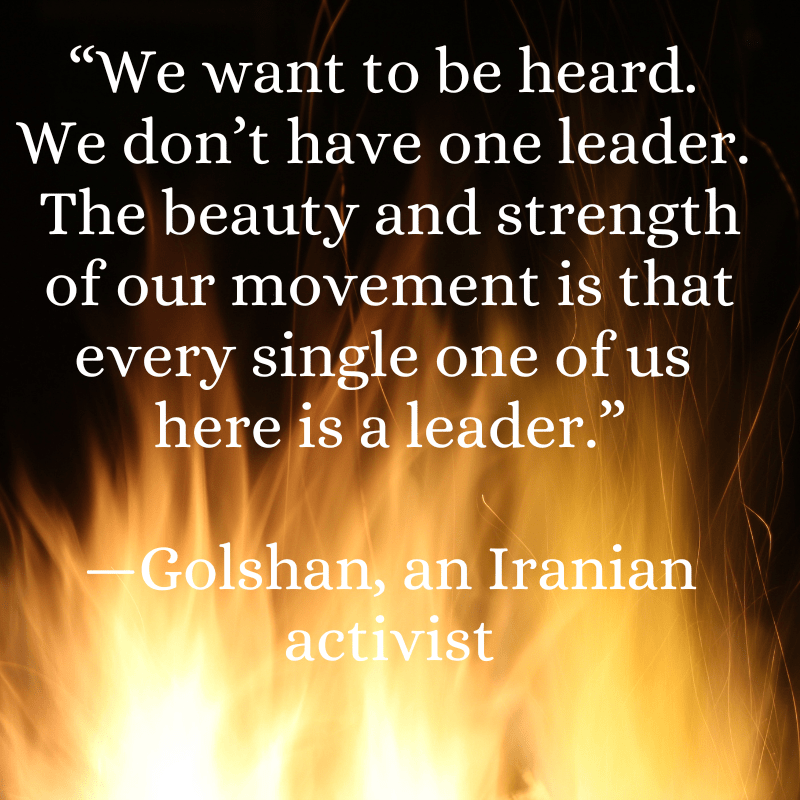
On September 13th, 2022, twenty-two-year-old Mahsa Amini was arrested in Tehran by the Guidance Patrol, Iran’s morality police, for supposedly violating the country’s strict laws requiring women to cover their hair. Hours after being detained, Mahsa Amini was taken to a hospital and died days later on September 16th. While police claimed she suffered a heart attack, testimonies and medical evidence suggests she died as a result of being severely beaten while in police custody. Her death ignited a firestorm of protests and, over fifty days later, people across Iran—and the world—are still taking to the streets and rallying around the slogan of “Woman, Life, Freedom.” The seemingly simple phrase not only encapsulates the aspirations of the protestors but also questions the very foundation of the Iranian government, which has long sought to deny women their basic rights and dignity.
The current protests in Iran are distinct for a number of reasons. Protest movements—and especially sustained protests—are rare in authoritarian regimes like Iran. What makes these protests especially unique is that young women and girls are at the forefront. Despite intimidation and threats of violence and even death, women and girls have bravely defied the country’s laws. Pictures of girls and women removing and burning their headscarves and cutting their hair have become symbols of the movement. Schoolgirls are among those that have taken to the streets, giving their middle finger to pictures of Iran’s leaders and demanding not only “Woman, Life, Freedom” but also “Death to the Dictator.” At a school in Karaj, a suburb of Tehran, girls removed their hijabs and forced the pro-government principal out of their school. Their actions are a powerful reminder of girls’ courage and the strength of their actions and voices. Such bravery is not without a cost. According to the Iran Human Rights group, as of November 6, 2022, over 300 people, including 41 children, have been killed in the protests and 15,000 imprisoned. Nevertheless, the protests show no sign of abating.
Another distinct feature of the current protests is how widespread they are—with people of different ages, classes, genders, and ethnicities joining in the movement. Iranian activist, Golshan, described how this broad appeal is due to the nature of the movement: “We want our voices to be heard. We don’t have one leader. The beauty and strength of our movement is that every single one of us here is a leader.” While girls and women are at the forefront of the movement, boys and men have also joined the protests. In late September, twenty-five-year-old singer, Shervin Hajipour, composed “Bayare,” which translates to “For…” Hajipour used tweets related to the protests to compose the song’s lyrics. The singer was arrested after posting the song on Instagram in late September, but attempts to silence him and the other protestors have not succeeded. The song has become the anthem of the movement and sung throughout the world. It captures the anger and frustrations and also the deep yearning for a better future felt by Iranians, especially the young people of Iran:
For the feeling of peace
For the sunrise after long dark nights
For the stress and insomnia pills
For man, motherland, prosperity
For the girl who wished she was born a boy
For woman, life, freedom
For freedom
For freedom
For freedom
-Elizabeth Dillenburg
Resident Scholar
Girl Museum Inc.
